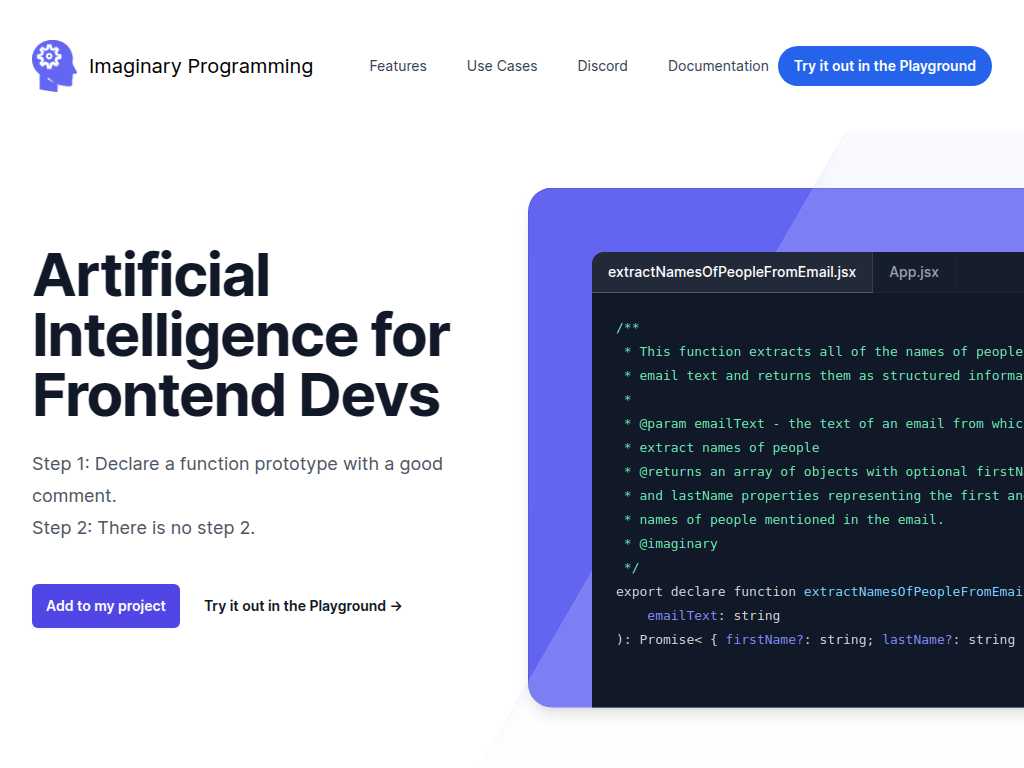Imaginary Programming
Natural Language Processing

Harness AI with Imaginary Programming - No ML Team Needed
Average rated: 0.00/5 with 0 ratings
Favorited 4 times
Rate this tool
About Imaginary Programming
Imaginary Programming is a breakthrough tool for frontend developers, enabling them to effortlessly harness the power of AI. Rather than spending countless hours or even months training an AI model, developers can now simply write an Imaginary Function comment to instruct the computer on what to perform. This innovative tool allows you to harness AI capabilities without having a dedicated Machine Learning team, making it significantly easier to integrate into your projects. It's TypeScript-based, so you can seamlessly add GPT intelligence to your existing Node.js, Next.js, and React projects. This not only democratizes the power of AI but also empowers frontend developers to become AI developers almost overnight.
Key Features
- Leverages OpenAI's GPT engine
- Requires no machine learning team
- Outputs structured JSON data
- Classifies data by semantic intent
- Parses unstructured text
- Integrates with node, next.js, and React
- Generates content automatically
- TypeScript-based implementation
- Web-based playground for trial
- Step-by-step installation guides